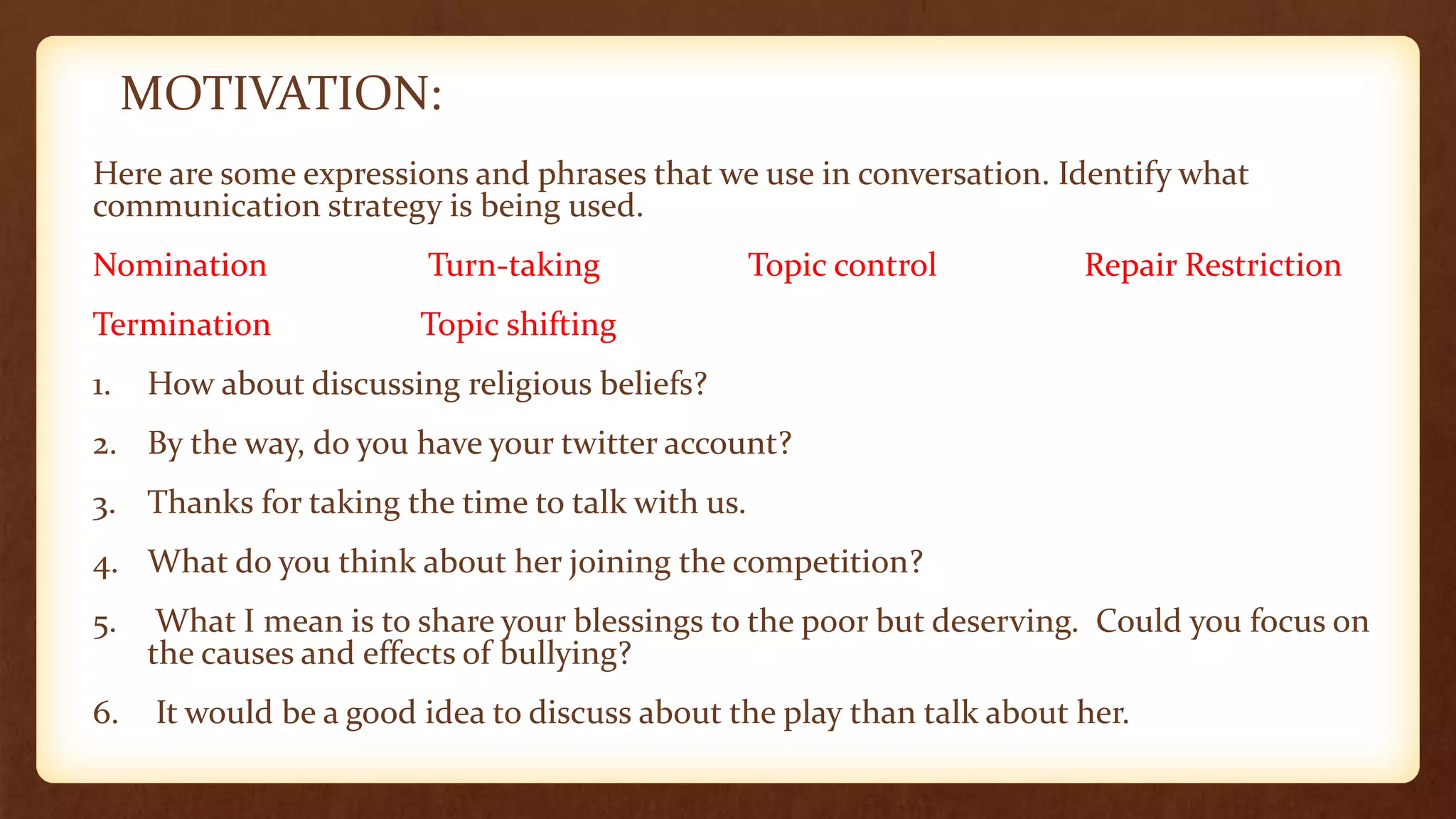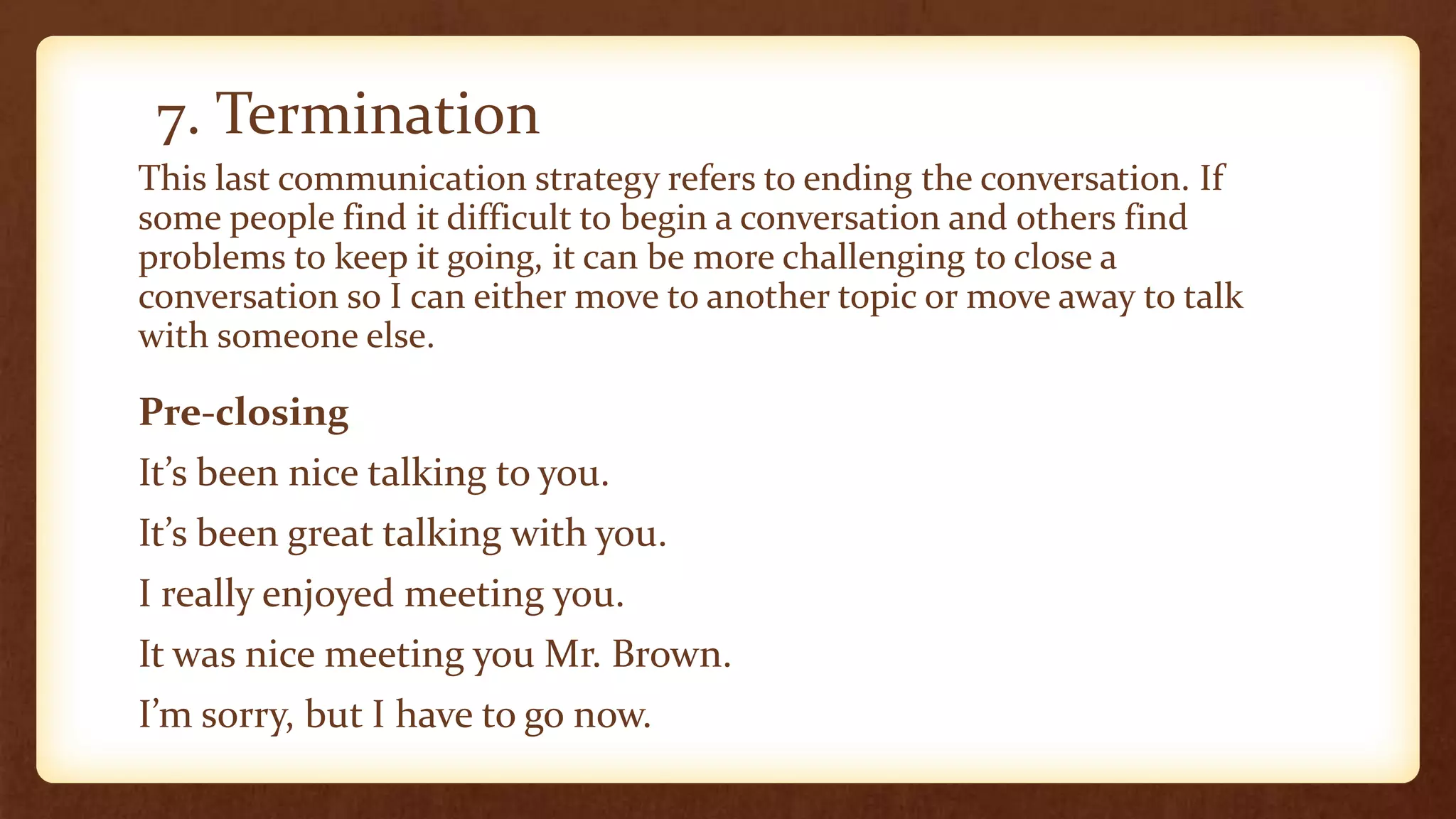This document discusses various communication strategies used in conversations, including nomination, restriction, topic control, topic shifting, turn-taking, repair, and termination. For each strategy, examples are provided to illustrate how it is used. Nomination refers to suggesting topics for discussion, while restriction limits or avoids certain topics. Topic control involves carefully managing topics being discussed. Topic shifting changes the subject being discussed. Turn-taking refers to taking turns speaking in an orderly conversation. Repair is correcting misunderstandings, and termination concludes the conversation.





















